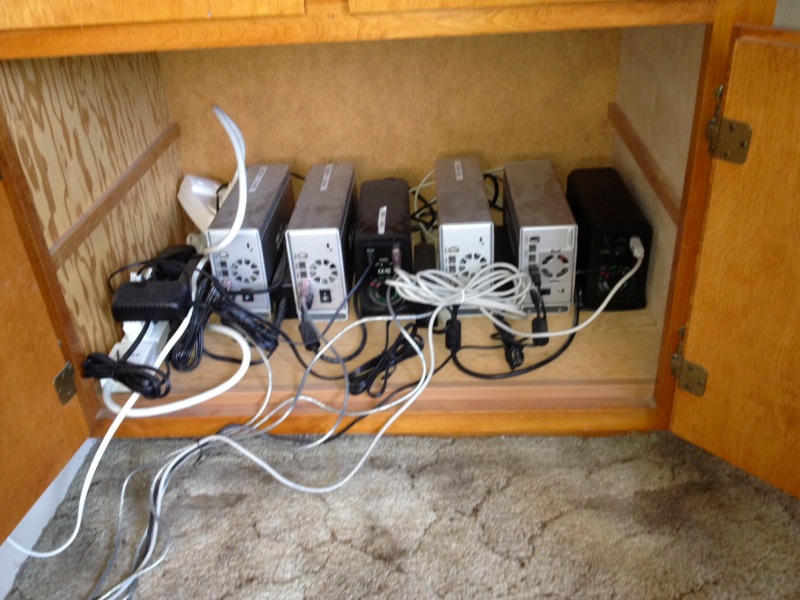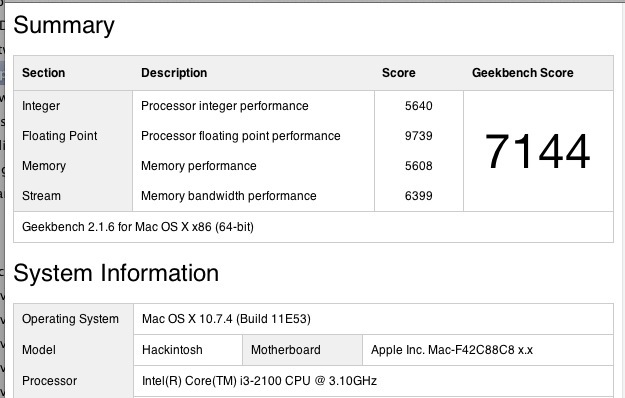Storage changes.
Over half a decade ago I decided it made no sense to own DVDs. Hard to house, ugly to look at and even harder to access. Let me see, is that filed under Actor, Director or Title? Which movies was Bogart in? You get the idea. If ever a product was suited to random access, database storage, it is your movie library.
And movie libraries still make a lot of sense. The much vaunted Netflix, with its 140,000 snail mail offerings, manages to offer only 10,000 of these streamed over broadband and they are some of the worst movies ever made. Even when you find something really good streamed it is as likely as not to have disappeared from your Wish List when you return to watch it later. The Amazon Prime library is near useless and the Apple iTunes one is devoid of classics with content here one day and gone the next.
So I started in a modest way many years ago and ripped my 200 DVDs to a 1tb disk drive housed in a two-drive enclosure with an identical backup clone. As the next 200 came along so did another enclosure and pair of drives, until you get to the mess I have today:

Storage for 1200 movies.
First, you will see that the drive boxes vary. No sooner does a solid box come along than it is discontinued and you are forced to use something else. Second, I do not trust fragile USB hubs so six USB cables make their way to the HackMini which is equipped with no fewer than 8 USB sockets. Third, every box adds a fan and noise is part of the equation. These are still distant enough from the viewing location that noise is not an issue, but you can definitely hear the fans.
So, something has to give. A couple of years ago 3tb drives started coming to market. That means 600 uncompressed movies per drive. But they were costly. Then, to make matters worse, the Thailand floods struck and half of global drive production disappeared. Prices doubled.
Now, drive prices have returned to sanity and there are more good enclosures to choose from at attractive prices. I did the math and concluded the idea of moving what was in six enclosures and twelve drives to one enclosure with four drives made sense, so I plonked down my cash for one of these:

Mediasonic four drive enclosure.
For photographers and cinematographers, there’s a lot that appeals here; it’s not just for movie buffs. While this enclosure does not offer RAID redundant storage, I do not want something I do not remotely understand. A simple clone allows me to switch to the backup if the main drive fails, as it has once during the life of my six separate enclosures. Simple, effective, no nuclear physics involved. CarbonCopyCloner runs incremental scheduled back-ups while I sleep.
The appeal of a modern enclosure like the Mediasonic includes the provision of both USB3.0 and eSata connectors, as well as the ability to take up to four 3tb drives with SATA3 supported. Disk drive buffers are now up to 64mb from 16mb a few years ago and 7200rpm is standard compared with the 5400rpm of yore. If you are moving large volumes of data then USB3.0 and SATA3 are night and day compared to their predecessors. If your purpose is simply data storage and occasional retrieval, as with movies, these technologies add little, but as their incremental cost is near zero, why not have them?
After running the numbers I quickly realized that the $730 spent on the new enclosure and drives (the latter are $150 for 3tb) is less than the $1000 or so the old drives and enclosures command on eBay. A more than ‘free’ upgrade, though I prefer not to think what this hardware ran me over the years. However, in addition to being free, the lower noise, lower heat and power consumption (8 fewer drives means 50 watts less power) and lower space demands make this upgrade a no brainer. Thank you, Moore’s Law. The major potential fly in the ointment here is the relatively unexplored reliability of 3tb drives. Still, with each backed-up, it’s a risk I can accept. I make a living doing other things so that I can watch movies, and do not depend on the movies to make my living. You can read a recent technical review of the 3tb Seagate Barracuda drives I will be using here. The warranty on the (non-XT) drives I will be using is only one year, but drives tend to fail when new or very old. Fingers crossed.
One immediate snag is that DVDpedia, the excellent Mac-only cataloging utility I use for movies, which provides ‘click-to-play’ links to six movie volumes, will now have to have its database rejiggered to point to the two new volumes. Mercifully, DVDpedia enjoys excellent support and the SQL commands which allow an instantaneous batch change of Volume names appears here. (See the following post for updated code). The alternative of manually changing file paths for 1,200 movies is not a realistic one.
The current version of DVDpedia, a mere $18, allows syncing of your home theater Mac catalog with any iDevice so that you can peruse your collection at leisure. You cannot initate play from the iPad or whatever, but it’s a handy feature. Another useful one is the ability to export your collection to the web, which I do monthly, and which you can see by going to the Links at the bottom of this page.
More details when I have converted everything. Here are the current drive performance data for the HackMini which runs a modest Core-i3 CPU and 8Gb of 1333mHz RAM; I also include the Geekbench CPU performance so that you can compare it with your machine:

Xbench disk performance for an external, USB2, SATA2, 1tb Samsung 7200rpm disk drive.

Geekbench CPU performance for the HackMini.
One word of advice. Avoid the Drobo solution. Overpriced with a poor reliability record. Making a capable high volume storage, high speed solution using component parts yourself is every bit as easy and likely to be far more reliable. And it will cost less. Much less.